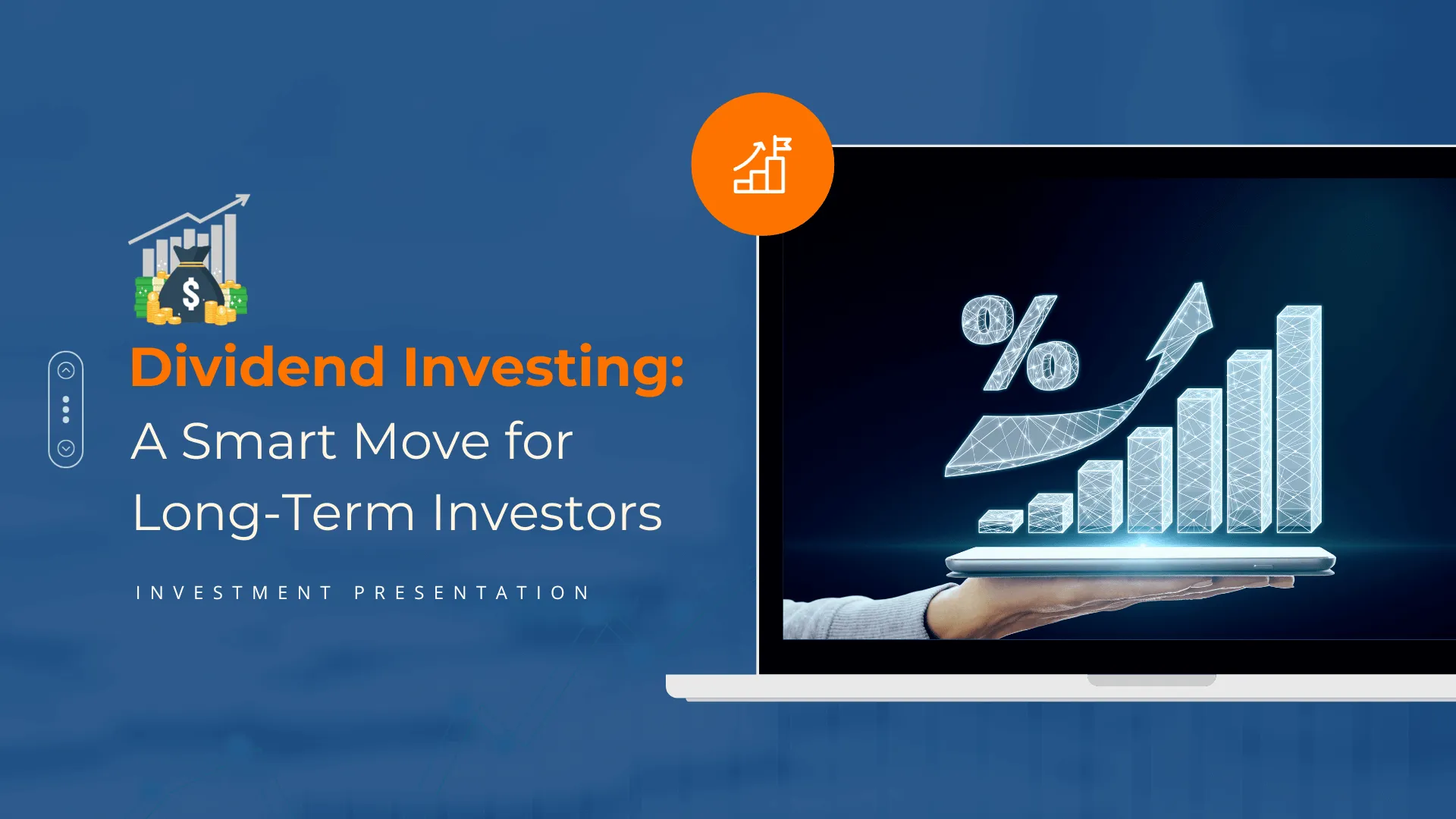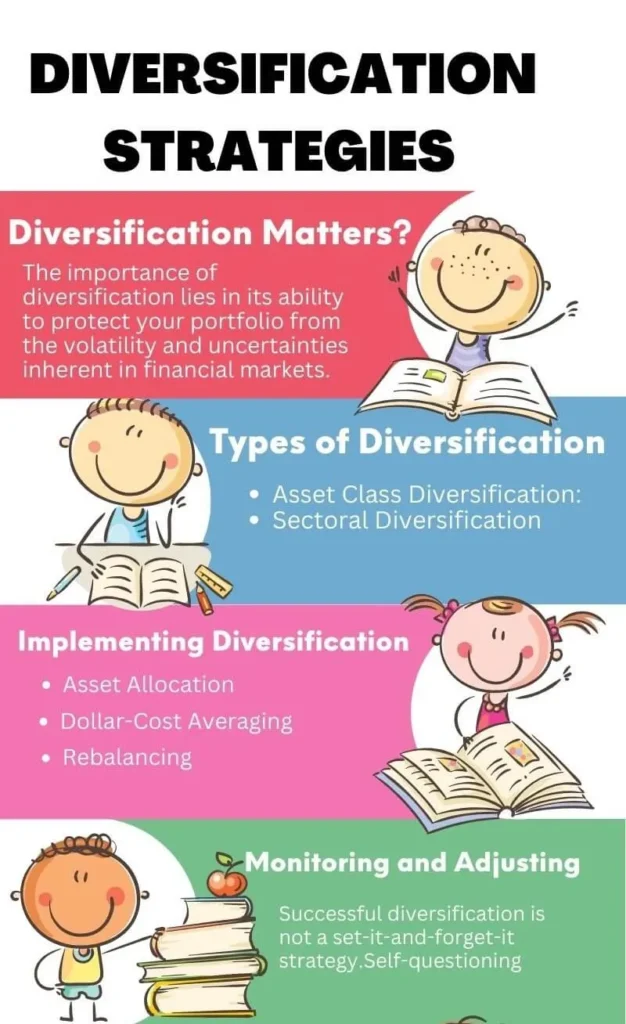
Dividend Investing: A Smart Move for Long-Term Investors
Personal Finance and Investing
- John Quarrie
- September 30, 2023
Investing in the stock market has long been a proven way to accumulate wealth over time. But like any financial endeavor, it comes with its set of risks and rewards. While some investors prefer the adrenaline rush of short-term trading, others find solace in the more patient, disciplined approach of long-term investing. If you’re in the latter camp, this article is specifically tailored for you. The essence of long-term investing is not just about holding onto stocks for extended periods; it’s also about having a well-thought-out strategy to mitigate risks and maximize returns. In this comprehensive guide, we’ll delve into the key aspects that make a robust long-term investment strategy. From understanding the nuances of risk management and portfolio diversification to selecting the most fitting stock market strategies for long-term growth, this article aims to be your go-to resource. Whether you’re a seasoned investor or just starting, the insights you’ll gain here are invaluable.
The Ultimate Guide to Value Investing for Long-Term Growth:
1. Why Long-term Investing?
Long-term investing is often heralded as a wise strategy for those looking to build sustainable wealth over time. Unlike short-term trading, which focuses on quick profits through frequent buying and selling, long-term investing offers the luxury of time, allowing your investments to grow through the magic of compounding. The long-term approach also has the advantage of mitigating the effects of market volatility, as your investments have more time to recover from market downturns. Additionally, long-term investing is generally more cost-effective, saving you from frequent trading fees and short-term capital gains taxes. Moreover, it gives you emotional peace of mind, eliminating the need to constantly monitor the market. For these reasons, many financial experts advocate long-term investing as a sound financial practice for the average investor.
2. Understanding Risk Management:
Investing in the stock market is not without its risks. The inherent volatility can be both an opportunity for profit and a potential for loss. That’s where risk management comes into play—an essential component for long-term investors. Risk management involves the identification, analysis, and mitigation of the uncertainties that come with investing. Essentially, it’s about balancing the level of risk you’re willing to take with the potential rewards you aim to achieve. Various tools and strategies can be employed in risk management. These include setting stop-loss orders to limit potential losses, diversifying your investment portfolio across different asset classes, and routinely rebalancing your portfolio. A good risk management strategy can also include exposure to different sectors or even countries to protect against systemic risks. By understanding and implementing effective risk management techniques, you safeguard your investments and, by extension, your financial future.
3. Diversification Strategies:
A. What is Diversification?
Diversification is the practice of allocating your investments among different types of assets, sectors, or geographical regions. The primary goal is to mitigate risk and enhance the potential for returns. By not “putting all your eggs in one basket,” you can safeguard your investments from adverse market conditions affecting a specific asset or sector.
B. Why Diversification Matters?
The importance of diversification lies in its ability to protect your portfolio from the volatility and uncertainties inherent in financial markets. A well-diversified portfolio can withstand market downturns more robustly and recover more quickly than a non-diversified one.
C. Types of Diversification:
- Asset Class Diversification: The most basic form involves spreading your investments across different types of assets like stocks, bonds, real estate, and commodities.
- Sectoral Diversification: Within asset classes like stocks, you can diversify further by investing in different sectors such as technology, healthcare, finance, and utilities.
- Geographical Diversification: This involves spreading your investments across different countries or regions to mitigate the risk associated with a specific geographical area.
D. Implementing Diversification:
- Asset Allocation: Deciding on the right mix of asset classes based on your investment objectives and risk tolerance is crucial for effective diversification.
- Dollar-Cost Averaging: Investing a fixed amount at regular intervals, irrespective of market conditions, can reduce the impact of market volatility on your portfolio.
- Rebalancing: Regularly reviewing and adjusting your asset allocation ensures that your portfolio stays aligned with your investment goals.

E. Monitoring and Adjusting:
Successful diversification is not a set-it-and-forget-it strategy. Continual monitoring and adjustment are essential to adapt to changing market conditions and investment objectives.
4. Portfolio Management:
A. What is Portfolio Management?
Portfolio Management refers to the art and science of making decisions about investment mix and policy, matching investments to objectives, asset allocation for individuals and institutions, and balancing risk against performance. It’s a holistic approach that extends beyond picking stocks, aiming to construct and maintain an investment portfolio aligned with one’s financial goals and risk tolerance.
B. The Objectives of Portfolio Management:
The primary objectives are to achieve the best possible returns while minimizing risks. This involves a variety of tasks such as asset selection, portfolio construction, and ongoing monitoring, all tailored to meet specific investment goals, whether they are income, growth, or a combination of both.
C. Key Components:
- Risk Tolerance: Understanding your level of risk tolerance is fundamental. Risk profiles can range from conservative to aggressive, impacting the types of assets that should be included in your portfolio.
- Asset Allocation: This involves dividing your investments among different asset classes—such as stocks, bonds, and real estate—to meet your financial goals and risk tolerance. Each asset class has its own risk and return characteristics.
- Diversification: As a subset of asset allocation, diversification involves strategically spreading investments within each asset class to reduce specific risks associated with particular securities.
5. Tax Implications:
One of the often overlooked aspects of long-term investing is the impact of taxes on your returns. In most jurisdictions, long-term and short-term capital gains are taxed differently, often at a much lower rate for long-term investments. Holding onto assets for a year or longer usually qualifies them as long-term, providing tax advantages that can significantly boost net returns over time. Additionally, certain tax-advantaged accounts like 401(k)s or IRAs can provide even greater benefits for long-term investors, offering tax-deferred or even tax-free growth. It’s also essential to consider the impact of dividend taxes, which can vary based on how long you’ve held the stock. Understanding the tax implications of your investment choices is crucial for maximizing after-tax returns, making it an integral part of a long-term investment strategy.
6. Tools and Platforms for Long-Term Investors:
Introduction to Investment Tools and Platforms:

In today’s digital age, a variety of tools and platforms are available to assist long-term investors in managing their portfolios efficiently. These resources offer valuable functionalities ranging from research and analytics to simplified transaction processes.
- Brokerage Accounts: Choosing the right brokerage is crucial as this is the platform where all your investments will be housed. Look for brokerages with low fees, strong customer service, and comprehensive research tools.
- Investment Tracking Software: Software like Mint or Personal Capital allows investors to track multiple accounts in one place. They provide an overarching view of your assets, making it easier to manage your portfolio.
- Robo-Advisors: Platforms like Betterment and Wealthfront offer automated investment solutions based on your risk profile and objectives. While not a replacement for human advisors, they are a cost-effective option for portfolio management.
- Risk Analysis Tools: Some specialized platforms offer risk analytics that can guide you in making investment decisions aligned with your risk tolerance and financial goals.
Conclusion:
In summary, investing in the stock market for the long term is a journey that requires a well-planned strategy, patience, and discipline. From understanding the importance of risk management to utilizing diversification strategies, each element plays a crucial role in securing your financial future. Effective portfolio management can’t be stressed enough; it’s an ongoing process that needs regular monitoring and tweaking to align with your investment goals and market conditions. Pay attention to the tax implications, too; a tax-efficient approach can make a significant difference in your net returns. Fortunately, a myriad of tools and platforms are available to help you navigate the complexities of long-term investing.
The key takeaway is that long-term investing isn’t just about picking stocks and holding onto them. It’s about adopting a holistic approach that considers multiple variables, from asset allocation to tax efficiency. By mastering these elements and continually adapting, you stand a better chance of achieving your long-term financial goals and growing your wealth sustainably.
FAQs:
1. What is considered long-term in stock market investing?
Long-term investing typically refers to holding an investment for one year or more. The exact duration can vary depending on individual financial goals and strategies.
2. How do I start with long-term investing?
Begin by defining your financial goals and risk tolerance. Based on these, select a diversified set of assets, and make sure to continually review and adjust your portfolio.
3. Are long-term investments less risky?
While long-term investments are generally less susceptible to short-term market volatility, they are not entirely risk-free. The key is to manage risks through diversification and regular portfolio rebalancing.
4. What are some recommended strategies for long-term investing?
Common strategies include value investing, growth investing, and index investing. The best strategy for you will depend on your investment objectives and risk tolerance.
5. How do taxes affect my long-term investments?
Long-term capital gains are usually taxed at a lower rate than short-term gains. Tax-efficient strategies can significantly improve your net returns over time.
6. Should I go for active or passive portfolio management?
Both have their merits. Active management aims to beat the market, while passive management seeks to match market returns. Your choice should align with your investment goals and expertise.
7. What tools can help me with long-term investing?
Various platforms offer portfolio tracking, risk analysis, and automated investment services. Examples include brokerage accounts, investment tracking software, and robo-advisors.
8. How often should I review my long-term investment portfolio?
It’s advisable to review your portfolio at least annually or whenever there are significant changes in your financial situation or the market environment.
9. Can I use dollar-cost averaging for long-term investing?
Yes, dollar-cost averaging is an effective strategy that involves investing a fixed amount of money at regular intervals, regardless of market conditions.
10. Is diversification really important for long-term investors?
Absolutely. Diversification can reduce portfolio risk and increase the potential for higher returns in the long run, making it a cornerstone principle of long-term investing.
Reference sites:
A. Educational Platforms:
- Investopedia: For comprehensive articles explaining financial terms and strategies, including long-term investing.
- Khan Academy – Finance and capital markets
B. Financial News Websites:
- Bloomberg: For up-to-date financial news and market insights.
- The Wall Street Journal – Markets
C. Investment Platforms:
- Morningstar: Known for its in-depth research and analysis on mutual funds and stocks.
- Seeking Alpha: A platform where various professionals publish analysis on stock markets.
D. Financial Advisory Services:
- Fidelity: Offers investment advice and has numerous articles on long-term investing.
- Vanguard: Known for its investor education section that covers various investment strategies, including long-term.
E. Blogs and Forums:
- Bogleheads: A community dedicated to discussing portfolio management and investment strategies.
- The Motley Fool: Offers stock advice and provides articles focusing on long-term investment strategies.

